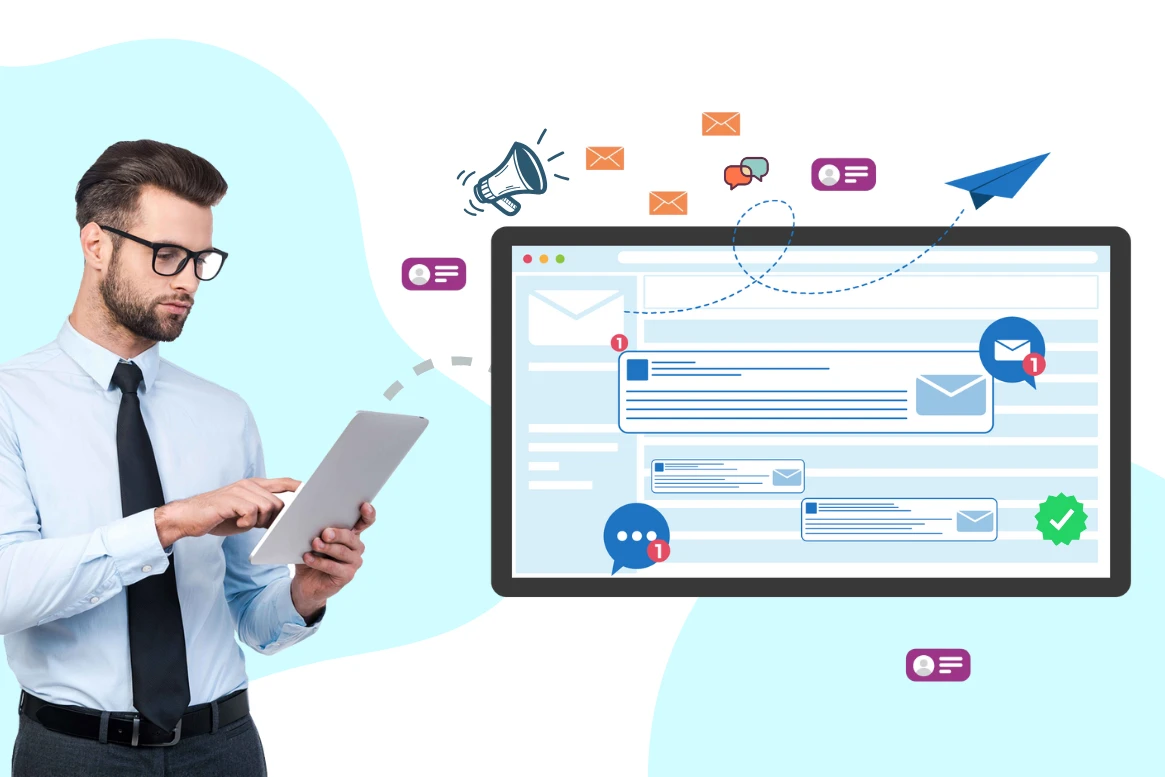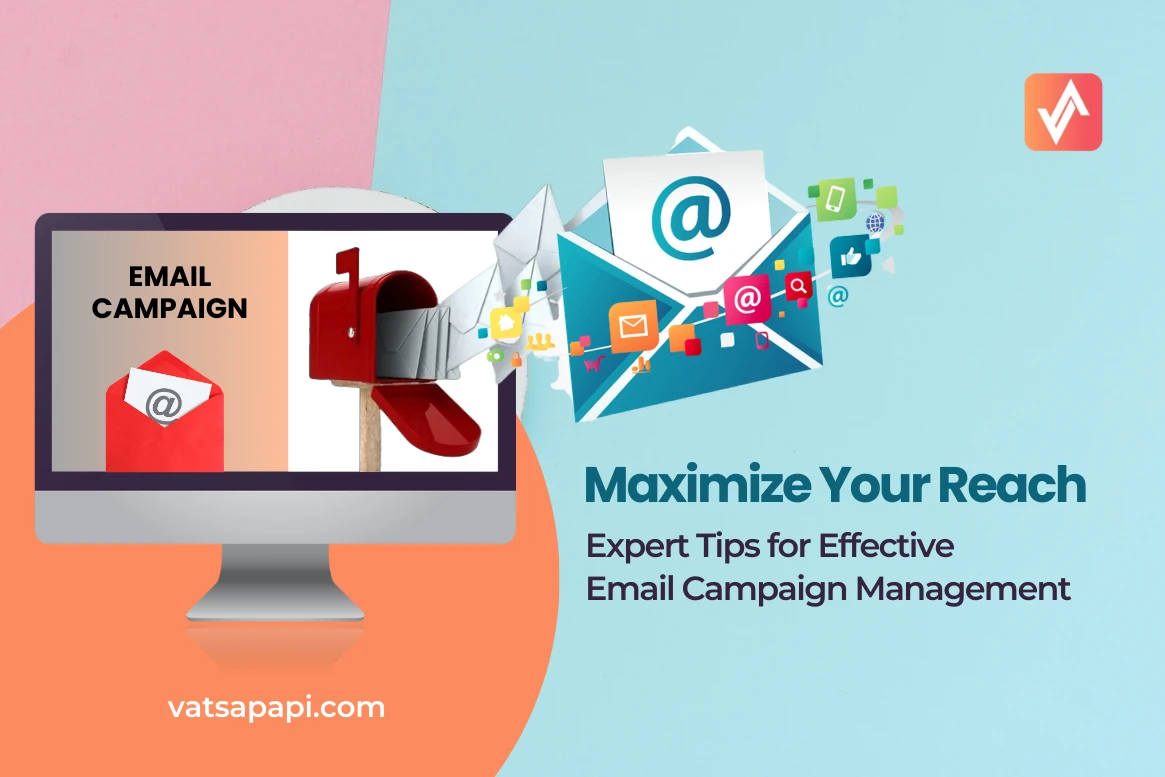
Unleashing the Power of Personalization in Bulk Email Marketing
Personalization is one of the newest ideas in the marketing world. Where more customers look for attention from brands that begin to focus on their recognition and appreciation. Particularly, personalizing bulk email marketing makes a huge difference. One-size-fits-all emails, which used to be enough to pique interest, are no longer the case. Businesses today embrace personalized email marketing to connect them with audiences. It also generates more engagement and increases sales. By keeping the spotlight on personalization in email marketing, brands can form relationships that go below the surface, build trust, and get each email marketing campaign ten times.
Here's a blog that digs up good stuff about email marketing with personalization: tips, best practices, and insights to craft compelling, customized emails that hit home with each recipient.
Why Personalization Matters in Bulk Email Marketing
With personalization in email marketing, brands can talk about their subscriber's needs and likes. It leads to meaningful connections because you can personalize your messages to capture the eye of your audience within the sea of messages in the inbox. A strong personalization practice distinguishes an opened e-mail from an ignored one. According to a study, personalization can bump open rates by up to 26% and click-through rates by over 14%. Let's jump into how you can leverage the power of personalized marketing and power every campaign through e-mail.
Benefits of Personalized Email Marketing
1. Higher Open and Click Rates
Open rates are high for messages with the recipient's name and personalized areas of interest. When someone reads his or her interests in the subject line of your email, he or she tends to open the email. Additionally, click rates increase because subscribers feel they receive something relevant.
2. Higher Conversion Rates
A personalized email campaign does not just open but also converts more. You are bringing the subscriber closer to a buying decision that seems natural and rewarding for him.
3. Better Customer Relationships
Building trust in marketing is the key. The time you spend trying to understand their needs and interests will reveal that you truly care for an individual. Thus, one gets to bond much better and be loyal to a brand.
4. Increased Revenue
Recent statistics indicate that this strategy can increase revenues by 10 to 20 percent while targeting specific audience segments. Personalization, therefore, drives engagement and ensures better returns on investment.
Key Personalization Techniques for Email Marketing Campaigns
1. Leverage subscriber data to the fullest
Subscriber data would go a long way in developing relevant email marketing campaigns. They include but are not limited to name, location, past purchases and browsing history to help create the most pertinent, personally specific communications for each subscriber's interests.
2. Segment your audience
Email list segmentation takes the whole list into smaller groups based on specific characteristics. Primary groups include demographics, purchase history, and behavior. This makes the email campaign more relevant and engaging for every group.
3. Personalize Subject Lines
Even your subject line could be the first point of appeal. A subject line that's addressed to a recipient with a first name in it can increase open rates by as much as 20%. So ensure that all your subject lines are short, catchy, and relevant enough to boost those clicks.
4. Personalized Content According to Preferences
It should send content corresponding to each individual's interests and needs. For instance, a clothing retailer may mail recommendations based on how well its past purchases or browsing behavior match or does not match the items it gave.
Best Practices for Personalized Email Marketing
1. Start Simple
As a first-time personalizer, it is good to start small. Use names in subject lines, and try to segment your users based on geography or purchase history. Add more layers as you go along.
2. Don't Over-Personalize
While personalization is powerful, avoid over-personalizing. Subscribers may feel very invaded when you reference precise data. Avoid the tricker behavior of bombarding people with too much information. Please stick to the basics of personalization and keep it relevant.
3. Test and Optimize
Testing is also vital to success in email marketing. You must run A/B tests on subject lines, content, and even call-to-action buttons to see what resonates with your audience. Open rates, click-through rates, and even conversions are the metrics to be measured to better optimize the campaigns in the light of email marketing.
4. Compliance with Data Privacy Regulations
With the rise of data privacy laws such as GDPR and CCPA, ensure transparency surrounds how you'll be using subscriber data; ensure subscribers know how their data will be used and give them a preference setting to allow them to control their preferences.
How to Implement Personalization in Your Email Marketing Campaigns
Step 1: Collect Data
To ensure the effectiveness of email personalization, you will collect data from your subscribers. This may include name, gender, location, preferences, and shopping history. Consider including a multiple-choice sign-up form where users might specify what interests them.
Step 2: Build Segments
Divide your email list into segments that share similar characteristics. This segmenting is by demographics by the history of buying or engagement. If you segment your list right, then each one of them will get content that pertains to him.
Step 3: Tailor The Message
Tailor the message for the different segments. For example, an online bookstore could send a list of recommendations based on previous purchases or genres of interest.
Step 4: Use Dynamic Content Blocks
Many email marketing platforms can provide dynamic content blocks and display different content based on the different preferences of each subscriber. For example, you could display different product recommendations for men or women or send event details to subscribers in various cities.
Step 5: Follow-up Emails through Automation
Trigger automation of email sequences that depend on specific actions. This is important when a customer abandons his or her cart so that you can follow up with a personalized reminder or discount code.
Common Pitfalls to Avoid in Personalized Email Marketing
Over-Segmentation
Too many segments get complicated, diluting the effectiveness of your campaigns. Good grief. Simplify and focus on the most impactful ones.
Inconsistent Branding
Your voice or message should always bleed through in almost every email, even the ones that are highly personalized. Every email has to feel like it is coming from the same place - not that it's all that personal.
Not Measuring Results
The worst thing about failing to monitor and measure performance is missing a valuable insight. Use analytics: leverage such tracking to know what works, then enhance and apply the relevant changes to your email marketing campaigns.
Conclusion
The power of personalization in large email campaigns is as deep as the feeling of receiving an email perfectly crafted just for you. With intelligent segmentation, they will undoubtedly increase their open rates, strengthen customer loyalty, and drive more sales with personalized subject lines and content. Customized email marketing, done correctly, becomes a powerful tool for creating a solid customer relationship with a potentially high ROI.
Want to learn more? Browse other articles on Whatsapp API to get the latest insights about email marketing best practices and more ways of connecting with your audience. Make your next email marketing campaign personalized, and watch your results soar!
Recent Blogs
 Tue, Aug 27, 2024 6:06 PM
Tue, Aug 27, 2024 6:06 PM
Maximize Your Reach: Expert Tips for Effective Email Campaign Management
 Thu, Aug 29, 2024 3:42 PM
Thu, Aug 29, 2024 3:42 PM
Why Vatsapapi is Leading the Charge in Bulk SMS Marketing Solutions

